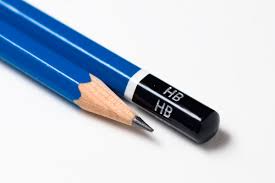As a child my piano teacher talked a great deal about fingering and how important it is to establish good fingering. I have to confess that I was a bit nerdy as a child about my piano playing and enjoyed the lessons where we worked on this. It must have been the challenge of sorting out a puzzle that caught my imagination.
Later on as a student when I was actively building up my music library and learning as much music as I could, I continued the pattern set by my teacher and wrote in fingerings. This was partly habit as much as anything but also at the time it helped me learn music more quickly.
 Years later I decided to programme a Chopin Ballade but my copy was very tired and with many pages missing. I bought a new copy. The trouble was it came minus my fingering. When I began to re-familiarise myself with the work, I had forgotten some of my original fingerings and had to work them out again.
Years later I decided to programme a Chopin Ballade but my copy was very tired and with many pages missing. I bought a new copy. The trouble was it came minus my fingering. When I began to re-familiarise myself with the work, I had forgotten some of my original fingerings and had to work them out again.
Luckily the old fingerings were pretty hard wired in my sub-conscience, quickly emerged and was working well. The new fingering just didn’t feel comfortable and in large part got binned. The message here has to be, write your fingerings in the score for posterity and look after your music! You will save a lot of time.
Why write in fingerings at all?
There is a school of thought that does not believe in organising and ingraining a set fingering. The belief is that the hand will find its own way, which to a certain extent is true, especially as a pianist becomes more experienced. The danger of this easy come, easy go finger memory is lack of reliability when playing under pressure.
I much prefer to spend time on the process of organising a fingering that suits my hand right at the beginning stages of learning a new piece.
 Planning the piano fingering of a piece can feel a real chore. Using good fingering at the very start of learning a piece however, will really help you learn faster, memorise easier and play with more ease, fluidity and reliably. It is definitively worth the effort!
Planning the piano fingering of a piece can feel a real chore. Using good fingering at the very start of learning a piece however, will really help you learn faster, memorise easier and play with more ease, fluidity and reliably. It is definitively worth the effort!
Get the fingering right and stick to it. The muscle memory gets activated the first time you play and becomes automatic so you won’t have to think about it anymore! Fingering is fundamental, but you have better things to focus on when playing the piece – like musical expression and phrasing.
How do I get started?
Start by trying out the original and see if that works. Today most piano sheet music from a good edition has fingering already written in the score, checking it out first will save you a lot of time. Do write in the fingering which feel best and stick to them every time you practise until it becomes automatic. 
In some music there is no fingering, so you will need to write in your own. Is it comfortable? Is it efficient? These are the two questions to ask. And unhelpfully, what works, works!
Of course it is never quite that simple and it helps to know some common rules that have been tried and tested by generations of pianists.
Some fingering will not feel right at all. What suits one persons hand may not necessarily suit another, so it is important to write in the changes that work best for you. Never leave it to the memory only, the fingering will get forgotten and all that time working it out would have been wasted.
Planning the Fingering.
The purpose of fingering is to help us perform the piece easily and in the most effortless way. It should help us to play difficult passages with fluidity and without hesitation. A basic tool for us to be able to perform the piece as we want to express it musically.
Here are some rules to help out less experienced pianists when planning fingering:
- Avoid thumbs on black keys.
The thumb is very short, and getting it to the black keys make unnecessary jerky movements. As always, there are exceptions to this. A piece may be mostly on the black keys and your hand will already be over the black keys.
- Learn the basic fingering patterns of scales, chords and arpeggios
This will teach you fingering patterns that work. Music pretty much consists of patterns. These patterns are scales, broken chords, blocked chords or arpeggios. Knowing these will greatly help take care of most of fingering issues.
- Try to find a fingering that lets your hand stay in the same position for as long as possible.
Try to find the easiest way to do something, take the shortest route. Avoid moving your hand around.
4. Fingering should always serve expression.
Think about the musical phrase you play, where does it lead to, where is the peak, where is the landing or resting point.
Finger with the phrasing. Don’t let the fingering stop the flow or direction of the phrase.
 Treating fingering as a challenge to be overcome, or perhaps a puzzle to be solved can make it more rewarding. The ultimate reward of course is being able to play that piece with ease, fluidity and reliability and having the tools to help convey the character of what you are playing.
Treating fingering as a challenge to be overcome, or perhaps a puzzle to be solved can make it more rewarding. The ultimate reward of course is being able to play that piece with ease, fluidity and reliability and having the tools to help convey the character of what you are playing.



Add Comment